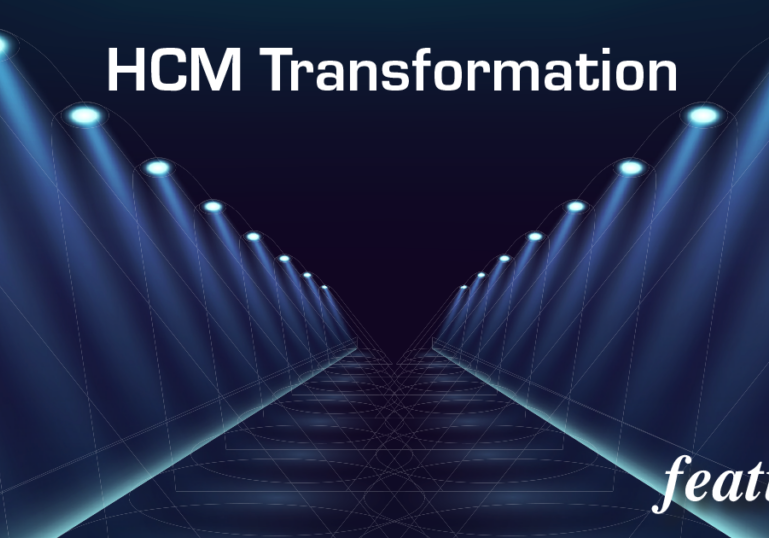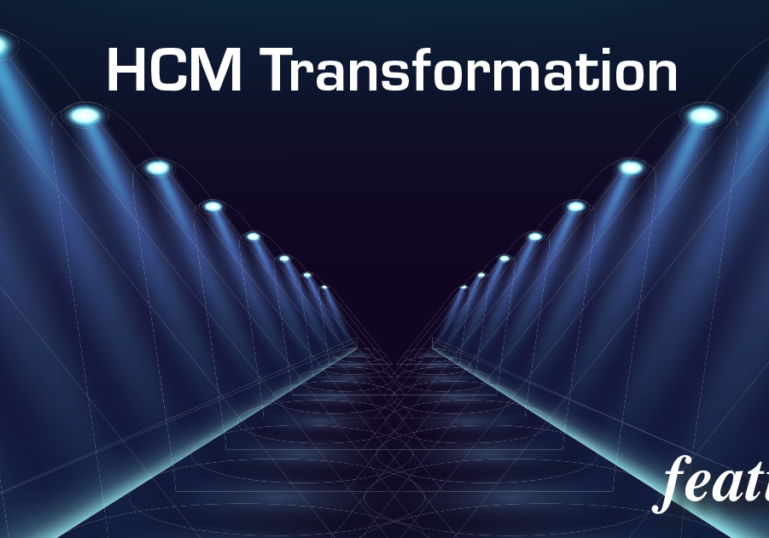While futurists used to talk about major technological innovations as disruptors and the changes introduced as “disintermediation” of the existing business order, little did they anticipate the degree of disruption caused by the small virus known as Orthocoronavirinae — commonly called the coronavirus. Business leaders had to make almost overnight decisions to ensure business continuity. Sometimes business models had to change: restaurants suddenly becoming take-out or catering businesses, brewers revamping to manufacture hand sanitizer, or grocery stores becoming home delivery services. All had ramifications for the HR teams involved.
The effect on HR professionals of the technical disruption such as implementing a new ERP, manufacturing system, finance or HRIS pales in comparison to that caused by the pandemic. Yet, we can apply some of the same principles to both in that major business disruption of any sort requires a measured methodology centered on change. Here, as a start, is a categorization of example disruptors by source and “controllability.” It is important for HR professionals in both situations to ascertain which challenges they can actually control; in the pandemic especially, there is much that they cannot.
Examples of Various Business Disruptors and “Controllability”
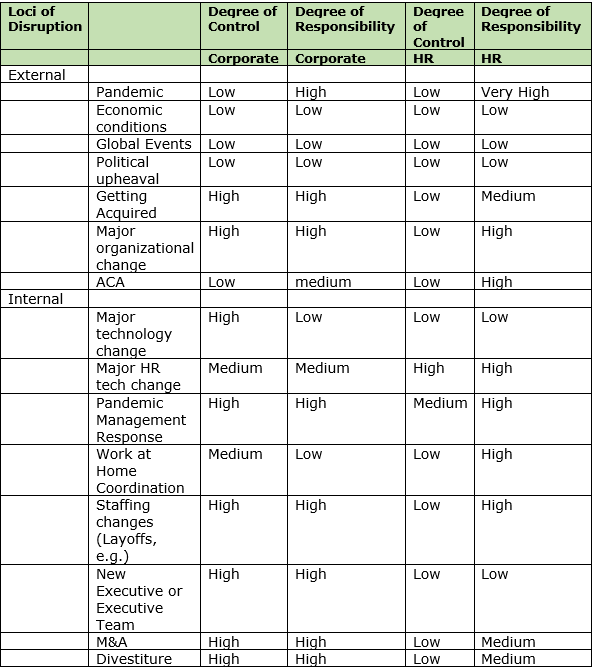
Interestingly, during the months of the pandemic so far, major HRIS software companies have reported strong numbers in the go-lives of new customers. Apparently, with fewer distractions from the workplace, implementation teams have been able to expeditiously approach application deployment. The result for HR professionals may well be addressing two major work disrupters at once: achieving adoption to a new HRIS or talent management platform and the training it requires, and managing a newly remote workforce in a rapidly changing world of regulations and expectations.
With either the introduction of major new software—say a new cloud-based HRIS/talent management system or a rapid-response move to creating a virtual workforce, some common guidelines can apply in facing the ensuing disruption.
Key Areas in Addressing Disruption
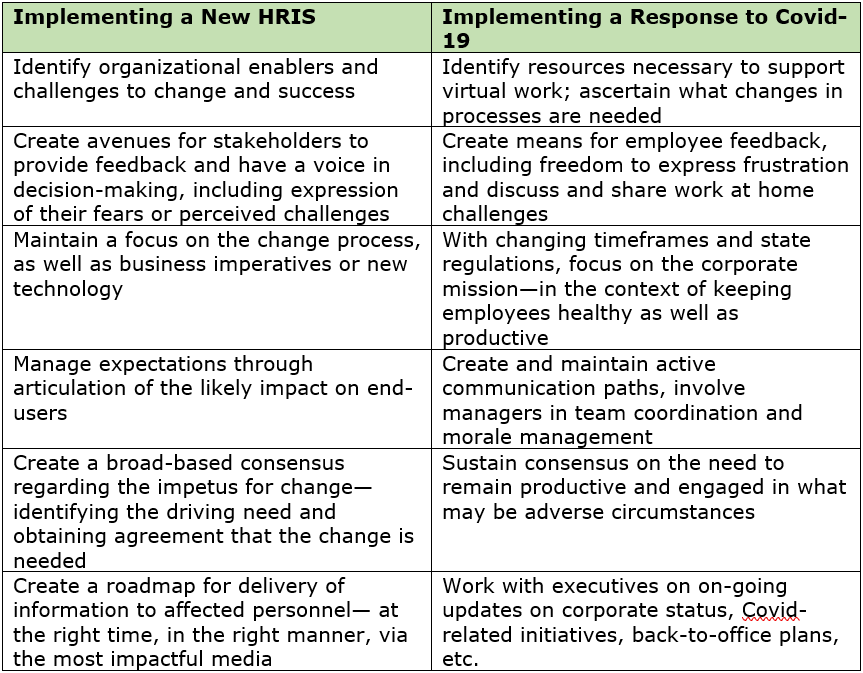
Confronting Disruptors
The task at hand may look insurmountable—whether it is a massive sift of all core HR and employee data to the cloud or suddenly trying to manage an HR staff and all the organization’s employees from one’s kitchen table. In cases where HR is also managing furloughs and layoffs, further challenges and stressors ensue. However, breaking down disruptive influences into manageable components is one way to make them easier to address.
Maintaining business continuity and service delivery is a foremost driver: the ability to keep providing goods and services to customers and clients despite disruption is crucial. There are “anti-disruption” steps HR professionals can take to meet this goal – regardless of disruption type. Here we will compare the two major disruptors we are reviewing—a new HRIS system deployment and coping with the corona virus pandemic – in terms of approaches to sample specific objectives related to business continuity. Again, the intent is to help break down challenges into more easily addressable parts.
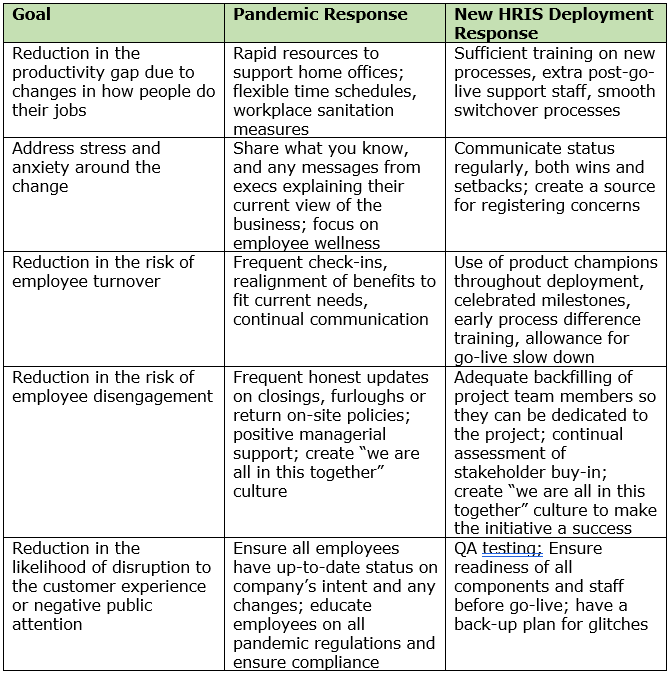
Summary
While comparing a major global pandemic to the deployment of an HRIS systems may sound specious, both disruptors clearly cause stress points in the organization that may fracture engagement and productivity if not addressed. This article was prompted in part by the growing number of HRIS/talent management deployments going live during the pandemic, as reported by the major vendors – creating two likely high-stress areas for HR professionals, who are eager to access new, modern functionality but trying to accommodate the new world of virtual work at the same time. Either situation is a major disruptor; simultaneously, they may appear double the effort. As discussed here, however, there is an advantage in breaking down the enormity of the task into smaller, addressable steps. In addition, for those who have managed a recent HRIS deployment or are in process now, understanding the similarity in change and people management steps may make facing the pandemic disruption easier.

